The Many Colors of Cape Verde

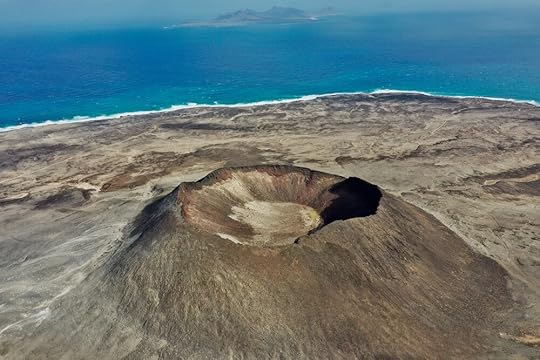
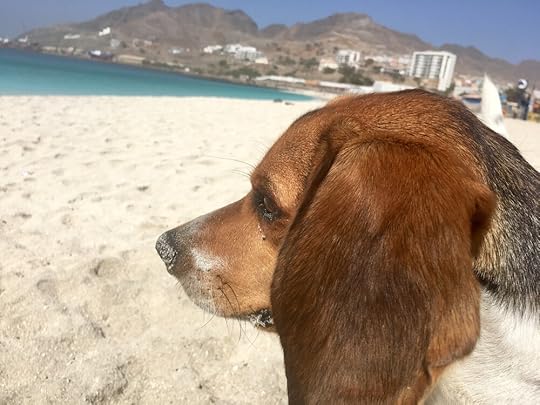
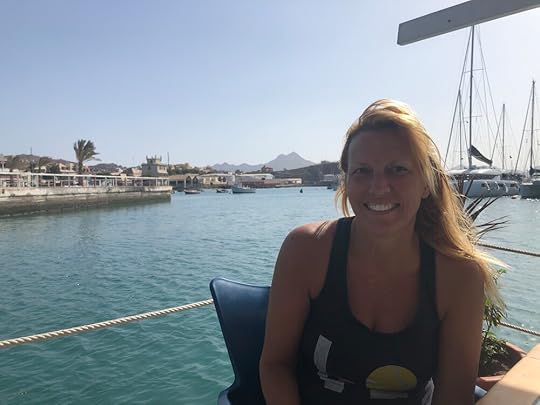
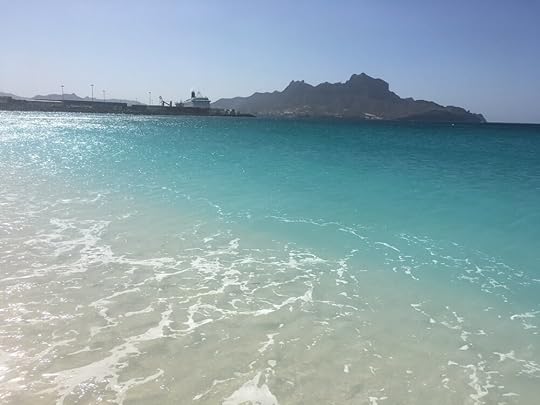
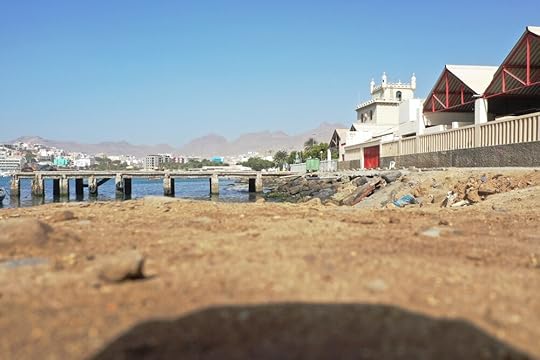
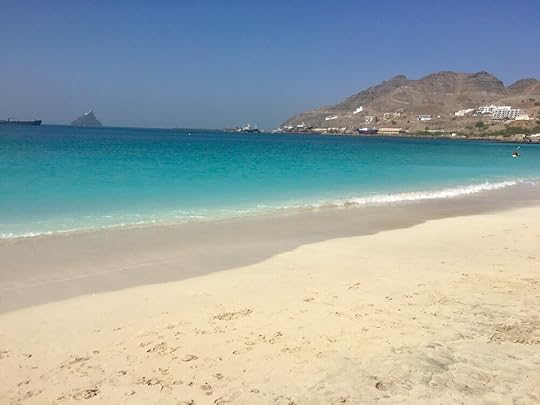
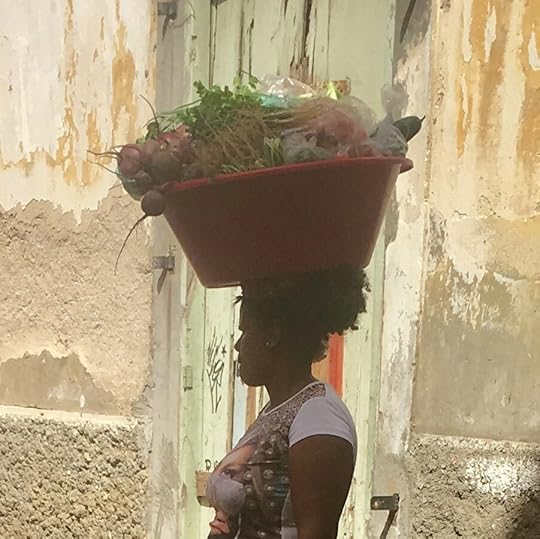
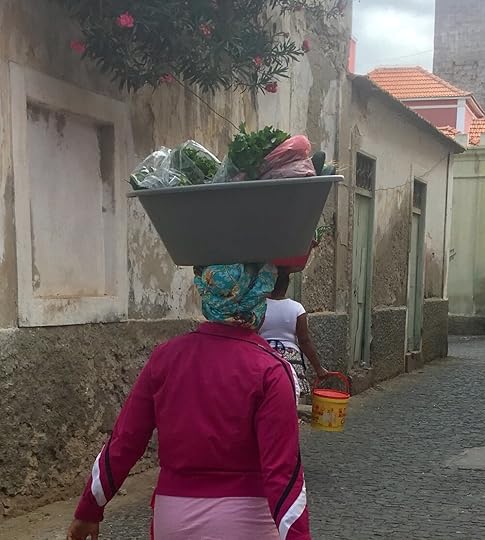
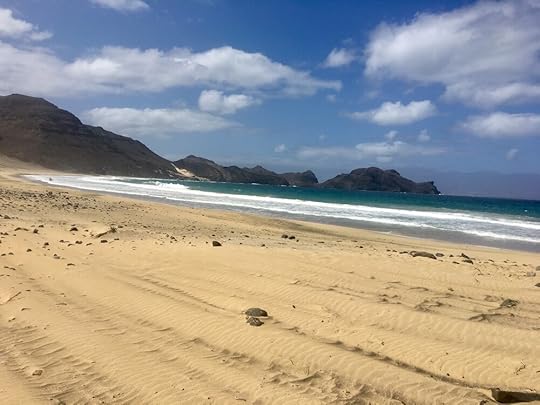
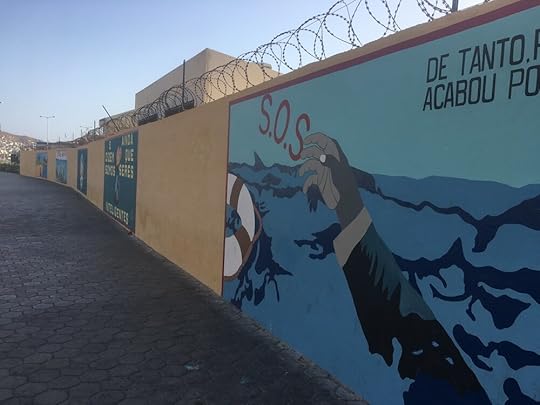

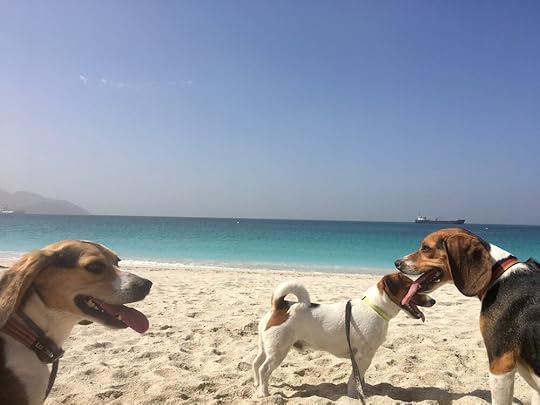
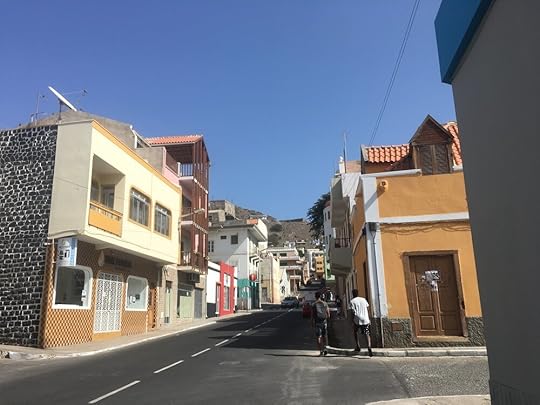
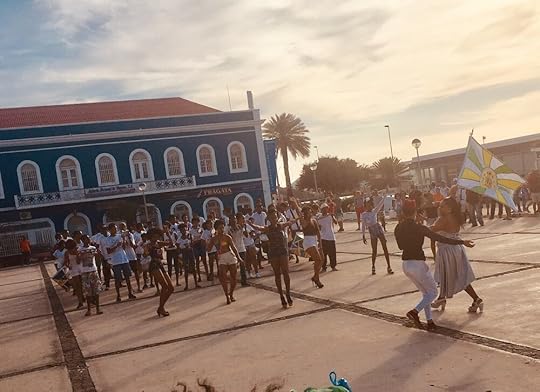
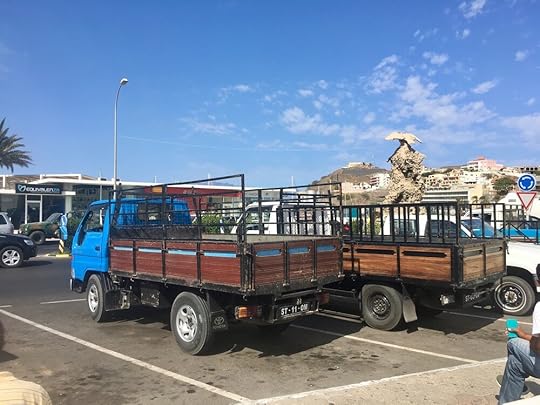
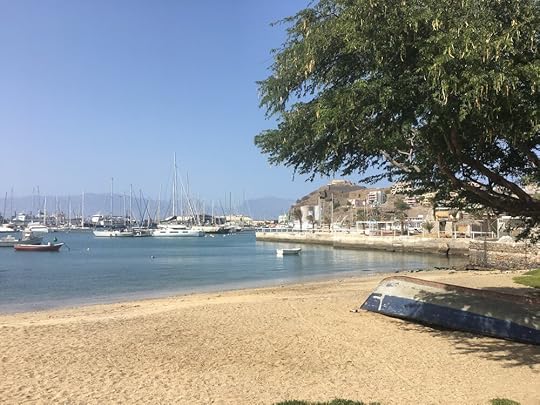
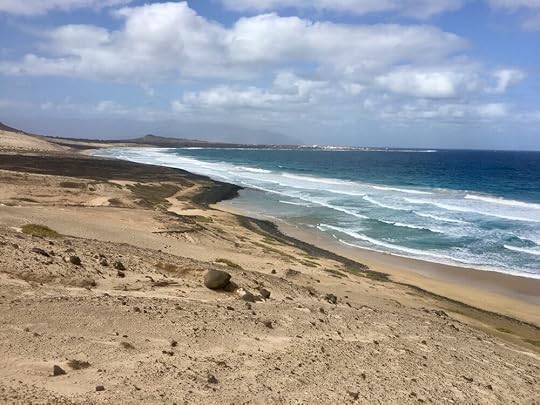
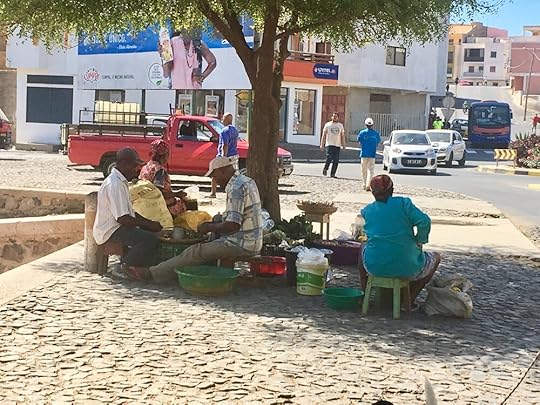
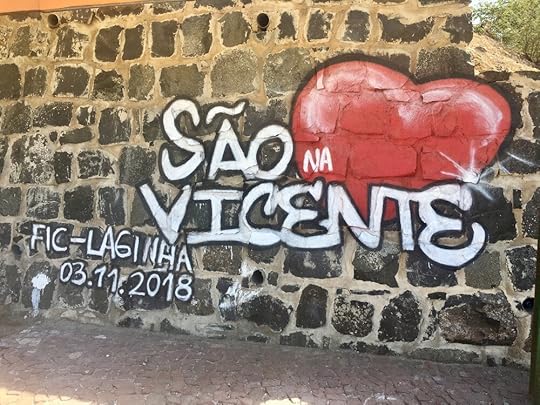
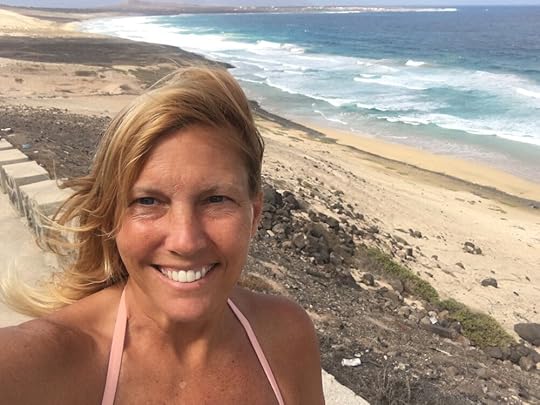


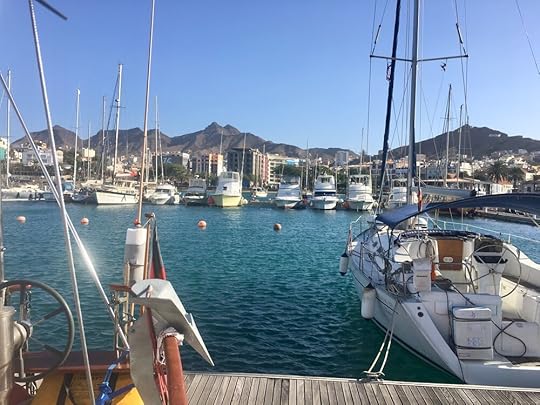
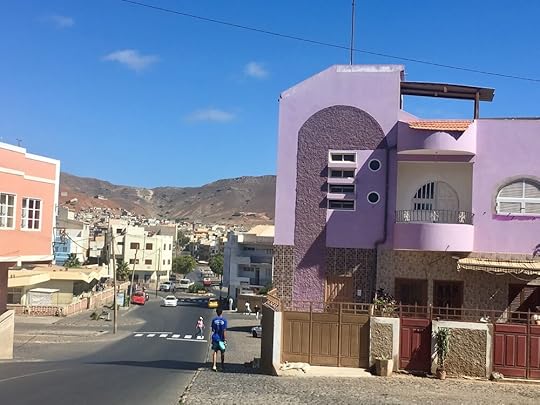
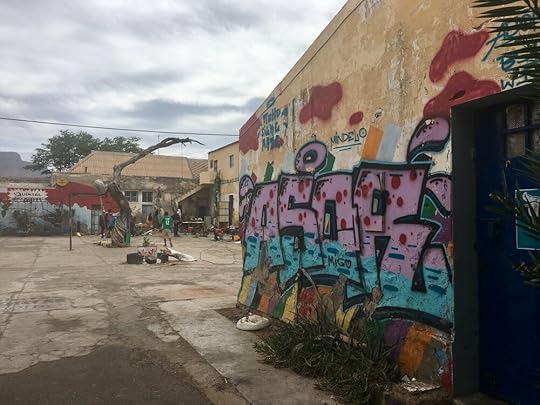
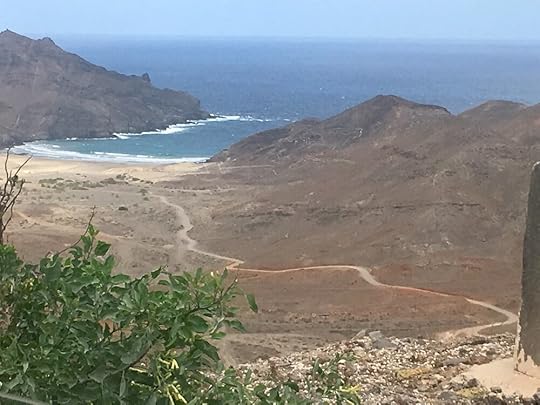

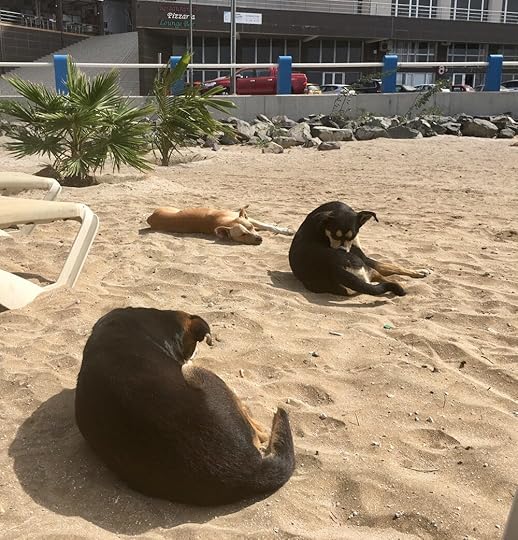
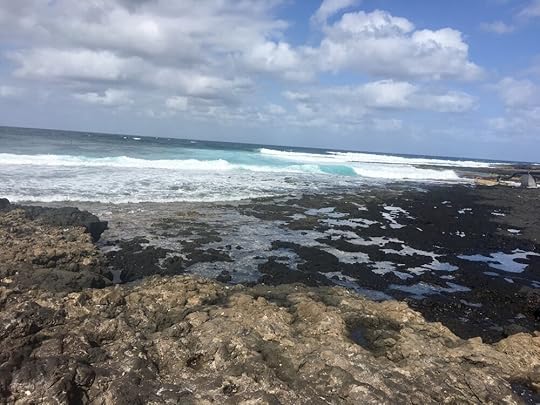
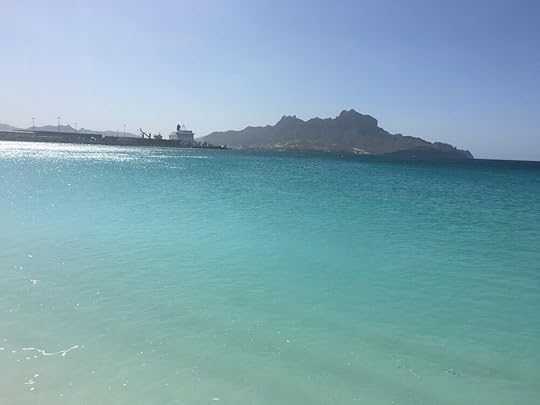
January 5 - 29, 2019By Michelle Segrest — Travel Adventures from #myofficetoday
Walk through the streets of Mindelo on the Cape Verde island of São Vicente to find a colorful culture bursting with rhythmic music, vibrant street art, energetic people, buildings painted in a rainbow of colors, dozens of stray dogs adopted by the community, and wild beaches with water as blue as Windex.
The women of Mindelo casually stroll through the city wearing bright colors and balancing heavy bins full of fruit and vegetables on their heads. They carry these bins as casually as if they were simply wearing hats. They find a street corner and peddle the fresh produce all day, until long after the sun drops behind the horizon of the plush brown mountaintops. For just about any amount of escudos (local currency) you offer, you can buy lettuce, potatoes, tomatoes, gigantic carrots, rhubarb, zucchini, huge papaya, squash, fresh coconut, bananas, and more.
There are open markets full of more vegetable peddlers. At the Mercado de Peixe you can choose from fresh fish pulled directly out of the Atlantic that morning. In the city center, near the harbor, there is a small replica of Lisbon’s famous Torre de Belèm and a bronze bust of Diogo Alfonso, a 15th century Portuguese explorer who discovered São Vicente and several of the other islands of Cape Verde.
Tucked away in the mid-Atlantic Ocean, the 10-island cluster that makes up Cape Verde is located more than 1,000 miles from the northwestern coast of Africa. Cape Verde’s landscape includes inactive volcanoes, miles of dry wasteland, and unbelievably beautiful beaches. The sea water reflects a mixture of every shade of blue and green you’ve ever seen.
Cape Verde (or Cabo Verde) is known for its Creole Portuguese-African culture and traditional lifting and rhythmic morna music. It also has close to perfect weather, rarely shifting up or down from 25-degrees Celsius (77F) at any time of the year, and it hardly ever rains.
The islands were uninhabited until Portuguese and Genoese sailors stumbled upon them in 1456. Many describe the archipelago as the “unspoiled alternative to the Caribbean.” Cape Verde stretches across 1,500 square miles of the Atlantic and contains 10 islands. Barlavento, the winward islands, include Santo Antão, São Vicente, Santa Luzia, São Nicolau, Sal, and Boa Vista. Sotavento, the leeward islands, include Maio, Santiago, Fogo, and Brava.
We spent three weeks in São Vicente, which has a population of just more than 80,000, with most of those people living in Mindelo. Monte Verde is its highest peak at 750 meters, and it dominates the landscape. Even though the name implies that it’s green, this mountain is brick red, chocolate brown, and every shade of red and brown in between with a little bit of green sprinkled on top.
Mindelo has everything from unfinished brown stone buildings in slum-like, dilapidated condition to buildings painted in bright purple, blue, yellow, orange, green, and red.
Handshakes are nowhere to be found. Instead, the friendly Cape Verdeans greet each other with a fist-to-fist pump with your neighbor followed by an in-sync fist pump to your own chest. The people of Cape Verde always seem to be outside and are always playing happy, lively music.
The streets of the city center are polluted with beggars, mostly men and children, who will walk up to any tourist (most of whom are sailors spending time at Marina Mindelo) and ask for a handout. They are not threatening at all, but the practice is a bit annoying. We actually wonder if it’s more of a habit than a necessity. Although the beggars are ever-present, the employed Cape Verdeans are hard-working, kind, and friendly. We have come in contact with many of them in the marina, the markets, and in the boat repair workshop.
The dozens of stray dogs are just part of the fabric of the island of São Vicente. They are friendly for the most part, well fed, and seem to have been adopted by the community although they obviously have no permanent home. Because the weather is so nice—not too hot and not too cold with only very rare drops of rain—they seem content living in the streets and eating random food trash dropped by the locals and tourists or found around the markets.
The open-air buses seem to be the perfect fit for this mild, comfortable climate. These are simply pick-up trucks with wooden benches that pick up the locals and take them where they need to go.
The beaches on the island of São Vicente are completely wild!! It’s amazing. There are no tall buildings blocking the coastline view. No restaurants. No hotels. No condos. And hardly any people. No lifeguards or flag signals are there to warn you of heavy waves or dangerous wildlife. You swim at your own risk. This is just nature and beauty in its purest form!
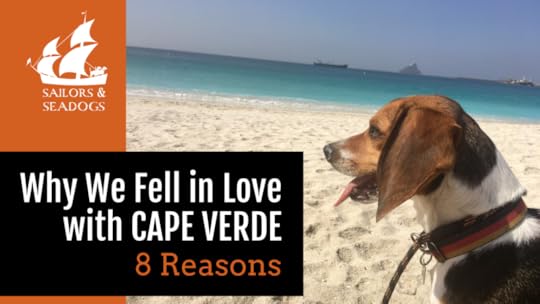
In the Mindelo town square, there is often music and activity. Locals dance in the streets and enjoy daily life. Most of the tourists are either sailors staying in the marina or anchored nearby, or people stopping for the day on cruise ships. A walk through the city center is always filled with color and life. There are often free concerts in the main square performed by well-known Cape Verdean musicians.
Because of its remote location, everything is expensive. It’s not difficult to understand why as we try to imagine just how difficult it would be to ship anything there. The internet is weak and sketchy, but we were able to find local data cards that helped us stay connected for the most part.
Our three weeks in Cape Verde were filled with mostly work for our clients and boat maintenance as we prepared our sailing vessel for an Atlantic Crossing. We even found a machine shop with the tagline, “If it’s made by humans, we can fix it.” The repair shop was full of very hard-working local men working in either flip flops or their bare feet. The equipment and machinery and tools looked “ancient.” It was amazing the quality of work they delivered working in such an environment. It’s a good thing. There are not many options in this part of the world.
This marina was full of battle-worn ships! Almost every sailor in the marina was busy making repairs after long voyages and in preparation of even longer voyages. Not many people sail to Cape Verde unless they are crossing the Atlantic or sailing to southern Africa. Some find their way to these remote islands when some sort of boat-related malfunction happens after leaving the Canaries. Others just use it as a break point when sailing from the Canaries to the Caribbean.
Every ship in the marina was working on repairs of some sort. The marina was active with the sounds of drills, sanders, hammers and conversations among sailors helping each other get fit to return to sea. Even with our broken motor, Seefalke was in better shape than most of the ships in the marina.
But we did find some time to explore this beautiful island and experience the friendly, colorful culture.
In Search of CachupaI had been wanting to try the traditional local dish, Cachupa. This slow cooked stew of corn (hominy), beans, cassava, sweet potato, fish or meat (sausage, beef, goat, or chicken) is often referred to as the country’s national dish. Each island has its own regional variation. Cachupa leftovers are often re-fried to make cachupa fria, cachupa guisada, or chachupa refogada (served for breakfast with a fried egg and a fried local sausage or fried mackerel).
We found a nice restaurant on the main street right outside the marina called Nautilus. I ordered the Cachupa which was a huge serving—very heavy and filling. It was warm and hearty and absolutely delicious!!!
A few days later we discovered a very cool local dive and returned many times during our stay in Cape Verde. Pastelaria is tucked away and hidden in a back alley, but lively music plays as the locals are always gathered there.
A traditional family-owned restaurant, the fisherman father and son bring in the fresh fish directly from the sea each morning. Mama is the cook, and the daughter is the hostess/waitress. They live in an apartment above the restaurant, which is open every day.
There is no menu. They serve what they catch each morning.
The entire restaurant is smaller than our sailboat, with four small tables. The service and the food are both fantastic! We tied up the beagles outside and paid a local man one euro to watch them so that there were no conflicts with any of the stray dogs. In this poor nation, you can’t imagine how happy this man was to earn 100 escudos (1 euro or $1.25 USD).
The local dish, Cachupa was available one day, but I decided to order the Garupa, a fish commonly found in the local waters.
This family is important to the extremely poor community. There is always vibrant music playing and locals hanging out there. Some of them come in and buy one cigarette at a time because they can’t afford a whole pack.
The portions of food are huge, and our leftovers were wrapped up and distributed to the hungry locals waiting outside. Our total bill one day for two home cooked meals and two drinks was around 600 escudos, which is less than $7 USD.

How to Sail with Dogs: 100 Tips for a Pet-Friendly Voyage
By Michelle Segrest
Dog-Friendly Beaches in Cape Verde
I decided to take a short walk to a nearby beach. My beagles, Cap’n Jack and Scout, had made a new friend in the marina with Tulling, an energetic Jack Russel terrier. His humans were not feeling well, so I offered to take all three dogs to the beach.
Tulling loves the water and wanted to jump right in. Cap’n Jack and Scout love to be ON the water, but don’t particularly love to be IN the water and aren’t quite sure about the waves at beaches. I was worried about unleashing three dogs who would likely run off in three different directions. Instead, I kept them all on their leashes. We walked the entire length of the small beach, Praia de Laginha, and then I sat for a while on the sugary white sand and admired the amazing blue and aqua colors of the water while the pups all spent their time digging. That’s right—they all three just dug holes in the sand for a few hours. We had a lot of fun.
It was cool to get a different view of Monte Cara, which we can see every day from the marina. Monte Cara is a mountain in the western part of the island of São Vicente. Its elevation is 490 meters. If you look carefully at the top of the mountain, you can see a human face looking at the sky. This is why it’s called Monte Cara, which means “face mountain.” It is a landmark in the city of Mindelo.
That evening, I wanted to try another local restaurant. We headed out in search of something new and tasty. We stopped at a nice Italian restaurant that had some variations of pizza and pasta but with a local flair. But they wouldn’t allow dogs, so we walked around a little and finally stopped at a local dive. Generally, we just love to find these “hole-in-the-wall” restaurants where all the locals eat. We are rarely disappointed. This time, we were not so lucky. I had fish that looked and tasted like a pork chop—and that’s all I have to say about that.
The next day I decided to venture back to the beach on my own.
It was a gorgeous but extremely windy day. I just lay there and soaked in the sun and got lost in the pages of a book for about three hours. Two stray dogs lay down next to me and napped in the hot sun. It’s been a while since I’ve been truly alone and with nothing to do. It felt so good to just relax.
As I was walking back to the marina, I caught a glimpse of some of the local graffiti, something I love to see in all the places we visit. São Vicente markets itself as the home to some of Cape Verde’s greatest musicians, writers, and thinkers. Mindelo is considered to be the cultural hub of the island.
I walked by the Universidade do Mindelo, which is one of only seven institutions of higher learning on the islands of Cape Verde. This university has only been around since 2003. It consists of one gray building on the corner of one square block.
Exploring More of the Island of São VicenteWe walked through the city some more and decided to venture far beyond the city center. This is where we found many local people out in the streets, listening to music, enjoying the amazing weather, and peddling more fresh vegetables. We constantly ran into the stray dogs of each neighborhood. It’s crazy how Cap’n Jack and Scout would bark and become agitated by some of them, and others didn’t even get a reaction from the beagles. One large brown dog just casually walked behind us for several blocks as if he were part of our pack.
There is only one airport on this small island. It is located about five kilometers from the Mindelo city center, just north of São Pedro. We passed it a few times while exploring some beaches, and we only saw one small airplane there at any given time. Its runway is 1,975 meters (6,480 ft) long and its width is 45 meters (148 ft). They generally have one flight per day to Lisbon, Portugal for connections to other parts of the world.
We rented a car and drove all around the island of São Vicente. We first drove to Praia Salamansa and enjoyed spectacular views of the surrounding mountains, crystally-dynamic blue waters, and pounding waves while several local kite surfers put on a show for us! As the hounds were enjoying their unleased time, we launched the drone and got some amazing footage from high above us.
As we were filming, a young local boy from the nearby rural village approached us, curious about the drone. He was probably about 12 years old and didn’t speak English, but we were able to find a way to communicate. It was obvious that the boy was fascinated seeing his home town from a completely different view. We are fairly certain he had never seen a drone before, and it’s possible he had never seen a video camera of any kind.
Soon, about 10 other kids came running toward us as we were landing the drone. The boy told them of the flying camera and they all became wide-eyed and looked to us to show them the magic machine. Unfortunately, the battery needed to be charged so we couldn’t launch it again for the new spectators. One of the kids had a small tray of seashells he had gathered from the beach. He had used the shells to make trinkets to sell. I bought a small turtle he created from the shells and a shell bracelet. Total price – 5 euros, which is probably more money than he had ever seen at one time before.

We set out to explore more of the island. We found a huge wasteland with a giant mountain sitting virtually in the middle of nowhere and decided to launch the drone again. We were amazed to discover that the mountain was actually a volcano that had been inactive for millions of years. Volcano Viana is not the most well-known volcano. It is not very notorious and does not spit lava, or smoke. It is small and off the beaten path. But it’s just breathtaking. WATCH THE VIDEO.
From there, we drove to Praia de Sarangaca, another totally wild an uninhabited beach with spectacular views and even more brilliant shades of blue!
We then decided to drive to the top of Monte Verde and see the island from its highest peak. We could see many of the surrounding islands and noticed the overall dryness of the island. In many places it’s desert-like with mostly sand, rocks, and mud. There is not much grass anywhere and not much natural vegetation. But the beaches that surround the entire island highlight the amazing azure waters of the Atlantic.
The next day we decided to go to the other side of the island to the beach at São Pedro. This beach once again had vibrant blue water. It also had gorgeous golden-blackish sand and was surrounded by another small village with buildings as colorful as a Crayola box. The wooden boats that lined the shore were also painted in a multitude of bright colors.
We were welcomed by about 10 stray dogs who seemed to be a built-in alarm system for the village. Cap’n Jack and Scout joined in the bark fest as we made our way to the water.
The water was a bit cold for me, so I played on the beach with the dogs.
Carnivals and Festivals in Cape VerdeThat evening, there was a free concert in the Mindelo city center square. One of Cape Verde’s pop stars (can’t remember his name) was performing a free concert. It was such a lively and energetic atmosphere as the locals and tourists enjoyed the free entertainment into the early hours of the next morning. Of course, we didn’t last that long.
While sitting at the marina’s floating bar on a lovely, mild evening a sweet couple from the Netherlands approached me and asked if they could pet Cap’n Jack and Scout. We started a conversation and I learned that Caroline and Fred have been sailing on Pegasus for a while and had been in Cape Verde for several months. They had visited eight of Cape Verde’s 10 islands and will not leave again until after the famous Cape Verde Carnival on Sao Vicente, which is a colorful spectacle of music, dance and street processions.
During the Mindelo carnival, also known as the Creole festival, the streets come alive with colorful dance troops and spectacular floats, each competing to win the coveted carnival prize for being the best. Unlike the similar carnival in Rio, this is very much a local affair, but in recent years it has become increasingly popular with people traveling to the island from all over the world who all come to join in the celebrations and watch this vibrant festival of life.
The celebrations start in January with colorful parades held every Sunday. We actually got to see one this week. The procession went through the streets and anyone who wanted to join in the dancing and celebration just jumped right in. The week leading up to Shrove Tuesday (in 2019 from the 2nd to the 6th of March) is crammed with parties and other events, eventually culminating in the main parade, which runs late into the night.
 Swimming with Loggerhead Turtles
Swimming with Loggerhead TurtlesWe decided we needed to have one more local experience before leaving Cape Verde. We took a break from our checklist, went back to our favorite local back alley restaurant with Alexa and Alain, our French friends/neighbors and then we all took a bus to São Pedro.
We had been to this beach before. It’s the one with all the colorful wooden fishing boats lining the shore and the dozens of stray community dogs welcoming us with their built-in barking alarm system.
We put on our diving gear and swam in the warm water in search of Tortuga—local loggerhead turtles that swim in the wild in this area. We found these beautiful playful creatures and swam and played with them for hours. It was a remarkable experience. They were so friendly and swam right up to us. WATCH THE VIDEO
It was the perfect way to end our three weeks in this vibrant place full of wildlife, spectacular scenery, and colorful people.
WATCH THE VIDEO ABOUT THE 8 REASONS TO LOVE CAPE VERDE
READ ABOUT THE SAILING JOURNEY FROM THE CANARY ISLANDS TO CAPE VERDE – Seabirds, Sunsets & The Southern Cross
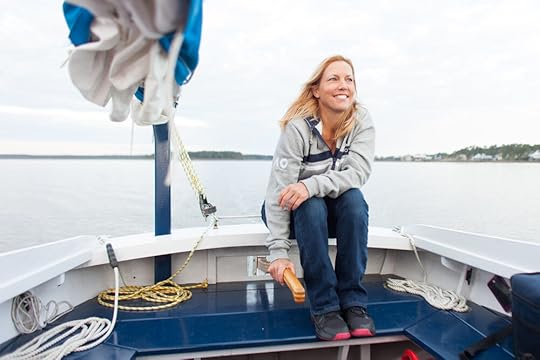
Sailing Adventure Blog



